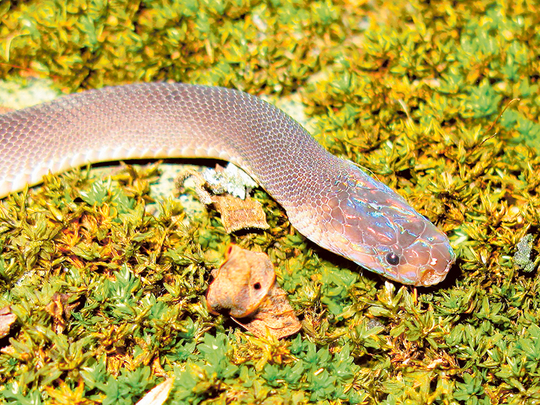
Bangkok: A rainbow-headed snake, a tiny frog and a lizard with dragon-like horns are among more than 150 new species confirmed by scientists last year in the ecologically diverse but threatened Mekong region, researchers said on Monday.
Winding its way from the Tibetan plateau through the mountains and jungles of Southeast Asia, the Mekong river helps sustain one of the most diverse regions on the planet.
Each year scientists announce new species, after an often lengthy identification process, highlighting how much more there is to learn about the region.
But there are fears many species may die out before even being discovered in an area of the world that is rapidly developing, where rule of law is notoriously shaky and wildlife smuggling rampant.
“The Greater Mekong region is a magnet for the world’s conservation scientists because of the incredible diversity of species that continue to be discovered here,” Jimmy Borah, from WWF’s Greater Mekong team said.
“They are racing against time to ensure that these newly discovered species are protected.”
The Greater Mekong region — which includes southwestern China, Vietnam, Cambodia, Laos, Thailand and Myanmar — is under intense pressure from dam and road building as well as a thriving illegal wildlife trade, much of it centred around the lawless Golden Triangle area where the latter three meet.
“Many collectors are willing to pay thousands of dollars or more for the rarest, most unique and most endangered species,” Borah said.
In total, scientists described 163 new species in 2015 including nine amphibians, three mammals, 11 fish, 14 reptiles and 126 plants.
Among the most eye-catching are parafimbrios lao, a snake found in the limestone karsts of northern Laos whose scales reflect rainbow-like colours around its head.
On the Thai tourist island of Phuket, which has seen huge development in recent decades, scientists found a lizard (acanthosaura phuketensis) with a fearsome-looking ridge of horns down its head and back.
And in the country’s northern Chiang Rai province researchers found a newt (tylototriton anguliceps) with dazzling red and black markings that they likened to a Klingon’s head from the Star Trek franchise.
In Cambodia and Vietnam, a new frog species that could fit on a finger tip was also discovered.
At 3cm long, leptolalax isos, can fit on a finger tip. It was first spotted in 2006 but peer-reviewed confirmation that it was indeed a new species took nearly a decade.
Between 1997 and 2015 there have been 2,409 new species described in the Greater Mekong, the equivalent of two new discoveries a week.












